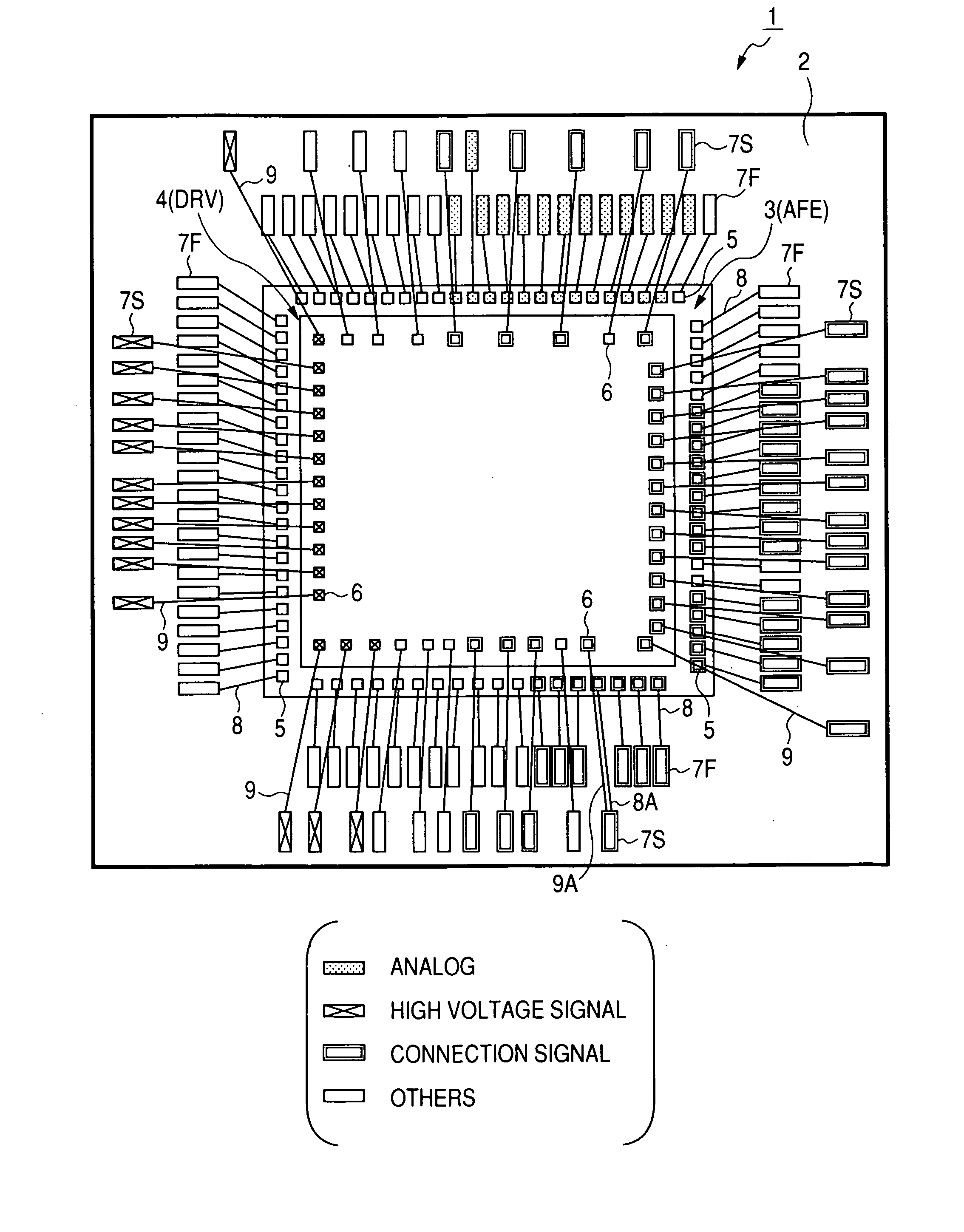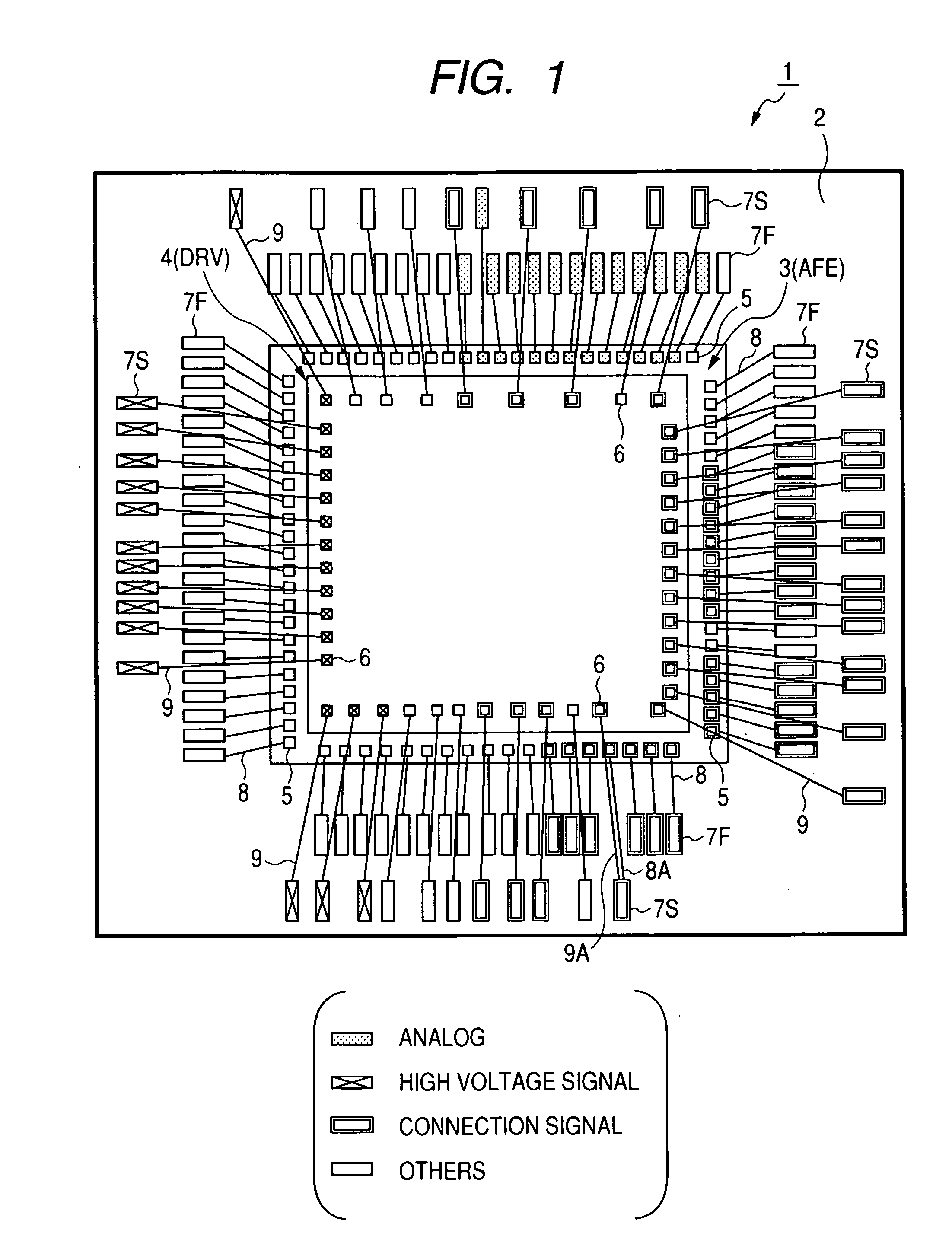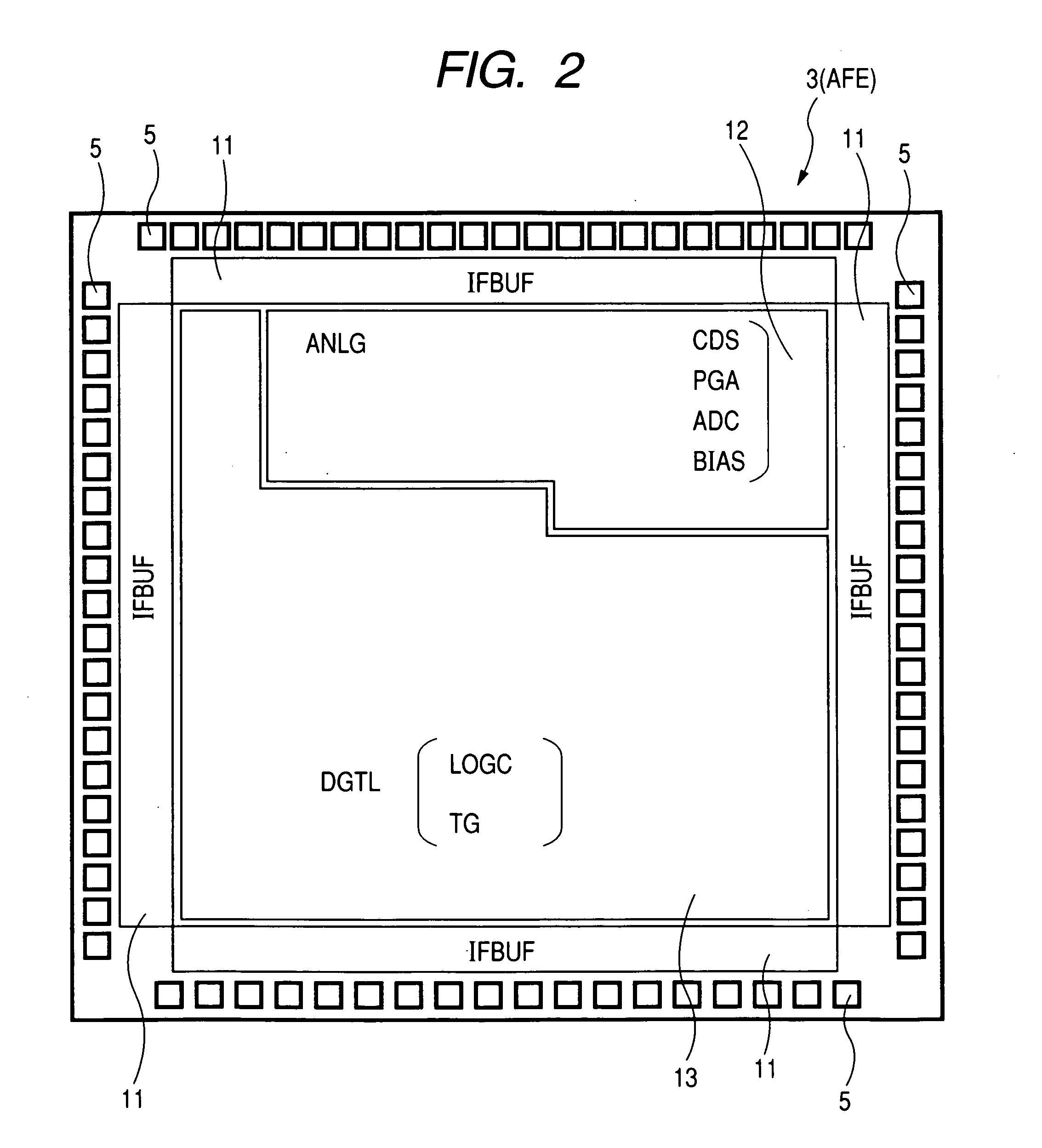Semiconductor device and an image sensing device
a technology of image sensing and semiconductors, applied in the field of semiconductor devices, can solve problems such as boosted coupling nois
- Summary
- Abstract
- Description
- Claims
- Application Information
AI Technical Summary
Benefits of technology
Problems solved by technology
Method used
Image
Examples
Embodiment Construction
[0041]FIG. 1 is a broad plan illustrating a semiconductor device. A semiconductor device 1 has a CCD analog front end chip (AFE) 3 as a first semiconductor chip and a CCD driver chip (DRV) 4 as a second semiconductor chip over a package substrate 2. Over the CCD analog front end chip (AFE) 3 bonding pads 5 are arranged in a row along the edge of each side, and over the CCD driver chip (DRV) 4 bonding pads 6 are arranged in a row along the edge of each side. Over the package substrate 2, bonding pads 7 are arranged in two rows along the edge of each side. The second row of the bonding pads 7 (second bonding pads) 7S is arranged closer to an edge of the package substrate 2 than the first row (first bonding pads) 7F. The first bonding pads 7F are bonded to the bonding pads 5 of the CCD analog front end chip 3 by bonding wires 8. The second bonding pads 7S are bonded to the bonding pads 6 of the CCD driver chip 4 by bonding wires 9. As represented by 8A and 9A, there also is a form of c...
PUM
 Login to View More
Login to View More Abstract
Description
Claims
Application Information
 Login to View More
Login to View More - R&D
- Intellectual Property
- Life Sciences
- Materials
- Tech Scout
- Unparalleled Data Quality
- Higher Quality Content
- 60% Fewer Hallucinations
Browse by: Latest US Patents, China's latest patents, Technical Efficacy Thesaurus, Application Domain, Technology Topic, Popular Technical Reports.
© 2025 PatSnap. All rights reserved.Legal|Privacy policy|Modern Slavery Act Transparency Statement|Sitemap|About US| Contact US: help@patsnap.com



